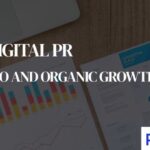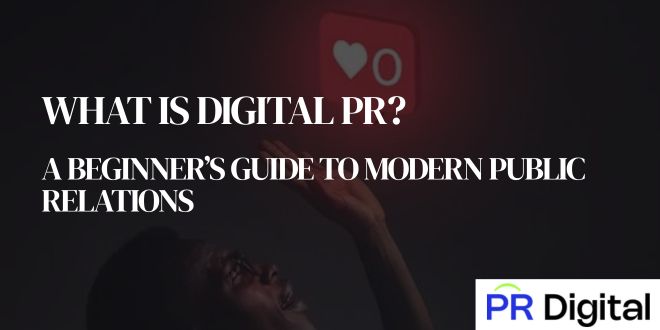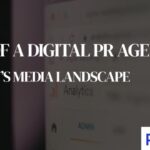
Author Archives: Nate Nead

Digital PR vs Traditional PR: Key Differences and Benefits
Digital PR is no longer a side-project that brands test out when they have spare budget; it has become the engine that drives modern reputation, search visibility, and audience engagement. Yet traditional PR—press releases, print placements, broadcast interviews—still carries undeniable weight.
Understanding how the two approaches diverge (and where they overlap) helps marketing teams allocate resources wisely and craft campaigns that feel seamless to audiences who move fluidly between screens and real-world experiences.
The Media Landscape Has Shifted
For decades, earned media primarily meant a coveted spot in the business section of a newspaper or a few minutes on the six-o’clock news. That model is far from dead, but it exists alongside a sprawling network of websites, e-zines, podcasts, influencers, Reddit threads, and social feeds that publish, repost, and remix content around the clock.
Digital PR lives inside this dynamic ecosystem: it targets online publications first, optimizes every asset for shareability, and keeps a finger on the pulse of trending conversations. Traditional PR still focuses on mainstream outlets and has slower lead times, while Digital PR thrives in real-time cycles and rewards brands that can pivot quickly.
Reach and Channel Diversity
Traditional PR typically relies on a finite set of “legacy” channels—newspapers, trade magazines, radio, and television. Those spaces are trusted, but they can be limited by geography and demographic constraints. Digital PR, on the other hand, scales instantly. A single story pitched to the right tech blog can snowball onto Twitter, Reddit, LinkedIn, and niche forums in hours, touching global audiences without additional printing or airing costs.
Even small businesses can tap micro-influencers, local bloggers, and industry newsletters to find hyper-targeted pockets of customers that legacy outlets rarely reach. Accessibility and breadth of channels are therefore built into the Digital PR model rather than tacked on as an afterthought.
Measuring Success Beyond Column Inches
Traditional PR has long counted success in column inches, audience circulation, or Nielsen ratings. Those numbers provide a broad stroke, but they rarely answer the next-level question: did the placement move the needle on search rankings, website conversions, or lead quality? Digital PR brings a data trail. Every link, share, comment, and click can be traced back to its origin, offering real-time insight into audience behavior and campaign ROI.
Common Digital PR metrics include:
- Referral traffic to specific landing pages
- Number and quality of backlinks pointing to the website
- Social media engagement (shares, comments, saves)
- Branded search volume and sentiment analysis
- Assisted conversions and revenue attribution
With dashboards updating by the minute, communications teams can test angles, headlines, and assets on the fly, continuously optimizing outreach rather than waiting weeks for a post-campaign debrief.
Relationship Building in the Modern Era
At its core, PR is about relationships—between brand and journalist, brand and consumer, consumer and community. Traditional PR nurtures relationships with editors, beat reporters, and producers who value consistent, credible sources. Those relationships remain valuable, yet the definition of “journalist” has stretched in the digital age. Bloggers, newsletter curators, YouTube hosts, and X (formerly Twitter) personalities can break a story long before it hits a wire service.
Digital PR professionals, therefore, expand their contact lists to include creators who influence micro-communities and spark high-intensity conversations. The end goal is identical—secure earned attention—but modern outreach requires familiarity with digital etiquette (DMs, tag mentions, embeddable assets) rather than formal pitches alone.
Budget, Speed, and Flexibility
Booking a TV spot or running a print advertorial often involves long lead times and hefty budgets. Digital PR campaigns can launch in hours with modest production costs (think a Zoom interview or a data-driven infographic).
Additionally, if messaging needs to be tweaked mid-flight, web copy, social captions, or paid amplification settings can change almost instantly—there is no reprinting or re-airing fee. This agility not only protects budgets but also safeguards reputation during fast-moving crises when silence or slow response can amplify negative chatter.
Complementary Strengths: Blending the Two Approaches
Rather than positioning Digital PR and Traditional PR as rivals, many successful brands weave them together, allowing each discipline to cover the other’s blind spots. A bylined opinion piece in a business publication can lend authority, while a simultaneous influencer collaboration humanizes that same message for younger audiences scrolling TikTok.
Integrating Narrative Across Platforms
Consistency is everything. Whether a CEO appears on a morning talk show (traditional) or records a behind-the-scenes Instagram Reel (digital), core messaging pillars—mission, differentiators, proof points—should align. Setting these pillars early ensures that no matter where a consumer encounters the story, it feels coherent and trustworthy.
Leveraging Traditional Credibility With Digital Virality
Legacy outlets still carry a halo of credibility; a Wall Street Journal mention can anchor investor trust. Digital PR amplifies that asset by:
- Embedding the earned coverage on the corporate website for SEO value
- Clipping key quotes and transforming them into bite-sized graphics for social channels
- Pitching spin-off angles to niche blogs that focus on sub-topics raised in the original article
- Running targeted paid campaigns to audiences who resemble the publication’s readership but missed the print edition
In essence, traditional credibility provides the spark, and digital amplification fans it into sustained awareness.
A Quick Blueprint for an Integrated Campaign
- Commission proprietary data or a survey relevant to your industry.
- Offer an exclusive to a respected print or broadcast outlet, guaranteeing first rights.
- Prepare an embargoed digital press kit—infographics, expert quotes, social snippets—to release the moment the exclusive goes live.
- Activate influencers and micro-publications to dissect and discuss different angles, linking back to the flagship coverage and your brand site.
- Track backlinks, social sentiment, and referral traffic daily, adjusting outreach to capitalize on emerging conversation threads.
The Bottom Line
No brand operates in a vacuum. A start-up with limited funds may lean heavily on Digital PR for its low barriers to entry and precise targeting, while a heritage brand eyeing shareholder confidence might still bet big on a prestigious print feature. In reality, most find success in a blended model: use traditional placements to anchor trust and digital touchpoints to foster community, gather granular data, and drive direct action.
Ultimately, PR is about storytelling at scale. Digital PR gives that story velocity, interactivity, and measurable impact; traditional PR gives it gravitas and long-term recognition. When strategy, resources, and creative assets are aligned, the two play off each other beautifully—earning attention wherever your audience happens to be, today and tomorrow.

What Is Digital PR? A Beginner’s Guide to Modern Public Relations
Public relations has always been about shaping perception, but the ways we influence that perception have changed dramatically. Enter Digital PR—a discipline that merges the storytelling principles of traditional PR with the speed, data, and interactivity of the internet. Whether you work for a multinational brand or a small creative studio, understanding Digital PR is now essential for breaking through the online noise and reaching audiences on their own turf.
Why Traditional PR Needed an Upgrade
Newspapers, trade magazines, and broadcast TV once ruled the media world. In that environment, pitching a single journalist often meant access to millions of readers or viewers. Today, news breaks first on Twitter, thought-leaders publish on LinkedIn, and customers leave product reviews on TikTok for the whole world to see. That fragmentation forced communicators to rethink everything from headline writing to crisis management.
From Press Releases to Tweets
In the pre-digital era, press releases were faxed or emailed to a handful of editors. Now, a tweet can do the same job in 280 characters—while also generating instant feedback in the form of likes, shares, or heated comment threads. Digital PR retains the cornerstone practices of research, messaging, and relationship-building, but adapts them to real-time platforms where conversations never sleep.
So, What Exactly Is Digital PR?
Digital PR is the practice of earning media coverage, backlinks, and brand mentions across online channels to build visibility, credibility, and search authority. It sits at the crossroads of traditional media outreach, content marketing, SEO, and social media engagement. The goal is to place your narrative where your audience already consumes information—whether that’s a business podcast, an influential blog, or the top of Google’s search results.
Core Components of Digital PR
A modern Digital PR program usually blends several moving parts:
- Online Media Relations: Identifying journalists, niche bloggers, and podcasters who influence your market, then providing them with relevant, newsworthy angles.
- Content Assets: Data reports, white papers, interactive infographics, or short-form videos that journalists and creators want to reference or embed.
- Social Amplification: Coordinating announcement dates with social teams, paid media, and influencer partners for maximum momentum.
- SEO Link Building: Securing backlinks from high-authority publishers to improve organic search rankings and drive referral traffic.
- Real-Time Monitoring: Tracking brand mentions, competitor buzz, and trending topics so you can join the conversation while it’s hot.
Each component can be run as a standalone tactic, yet the magic happens when they operate in sync—turning a simple story idea into a multi-channel splash.
How Digital PR Works in Practice
Building Relationships in the Online Space
Reporters and content creators receive hundreds of pitches daily. To stand out, Digital PR pros invest time in genuine relationship-building—commenting on journalists’ work, sharing their articles, or offering fresh data they can use in future coverage. Over time, these micro-interactions foster trust, making editors more receptive when you eventually pitch a story.
Tools and Platforms You’ll Lean On
While charisma and storytelling are timeless skills, Digital PR thrives on technology. Popular tools include:
- Media Databases (e.g., Muck Rack): For finding contact details and editorial preferences.
- Social Listening Platforms (e.g., Brandwatch): To spot emerging trends before competitors pounce.
- Outreach Automation (e.g., BuzzStream): For personalizing large batches of emails without sounding robotic.
- SEO Suites (e.g., Ahrefs): To gauge domain authority and track backlink value.
- Analytics Dashboards (e.g., Google Data Studio): For blending campaign metrics into a single, eye-pleasing report.
Knowing which tool to deploy—and when—helps keep campaigns nimble and measurable.
Measuring Success in Digital PR
Vanity metrics like raw impressions can be tempting but misleading. Savvy practitioners focus on indicators tied to business outcomes:
- Referral Traffic: Click-throughs generated by earned media links.
- Domain Authority Growth: How much each new backlink boosts overall SEO strength.
- Share of Voice: Percentage of brand mentions versus competitors in targeted conversations.
- Engagement Quality: Average time on page, social sentiment, and comments per post.
- Conversion Impact: How many leads, sign-ups, or sales stem from PR-driven visitors.
By aligning metrics with organizational objectives—whether that’s lead generation or reputation management—Digital PR validates its seat at the strategic table.
Getting Started: A Beginner’s Roadmap
If you’re new to Digital PR, the process can feel overwhelming. A structured roadmap keeps things manageable:
- Audit Your Current Footprint: List existing media mentions, backlinks, and social chatter to establish a baseline.
- Define Clear Objectives: Is your priority thought leadership, product launches, or SEO authority? Goals shape tactics.
- Craft Shareable Assets: Commission a survey, crunch internal data, or repurpose a slide deck into an infographic—give journalists something unique.
- Build a Target List: Segment contacts by topic, outlet type, and audience overlap. Quality beats quantity.
- Personalize Pitches: Show you’ve read the journalist’s latest piece and explain why your story adds value.
- Amplify Everywhere: Coordinate with content, paid media, and influencer partners so your message appears in multiple feeds simultaneously.
- Measure, Learn, Optimize: Review analytics weekly, celebrate small wins, and refine everything from subject lines to call-to-action wording.
Following these steps not only jump-starts a campaign but also cultivates the habits that separate reactive promotion from strategic Digital PR.
The Bottom Line
Digital PR isn’t a buzzword; it’s the natural evolution of public relations in an always-connected world. By weaving traditional storytelling into data-driven outreach, brands earn coverage that ranks on Google, resonates on social media, and ultimately drives real business results.
Whether you’re pitching a tech reporter on Slack, briefing a TikTok creator over Zoom, or sharing a data study on LinkedIn, the principles remain the same: be relevant, be timely, and above all, be helpful. Commit to those values, and your Digital PR efforts will not only secure headlines but also cultivate lasting credibility in the digital age.

Why Digital PR is the New SEO
Let’s be honest for a moment: SEO as we once knew it is wheezing on life support.
Not dead — yet — but very much in its “make peace with your loved ones” phase.
If you’re still obsessing over exact match keywords and link-swapping schemes, I regret to inform you that it’s no longer 2012.
AI search engines (including ChatGPT, Perplexity, Claude and Google’s new AI mode) are rewriting the rules. And the winners?
The brands with actual authority.
Enter: Digital PR — the new sheriff in town.
What the Heck is Digital PR Anyway? (Spoiler: It’s Not Your Dad’s Press Release)
Let’s clear this up right out of the gate: Digital PR isn’t about blasting out half-baked press releases through shady syndication networks that only your mom and bots read.
Digital PR is:
-
Getting your brand organically featured on authoritative, top-tier sites.
-
Earning credible, editorial backlinks from outlets people actually trust.
-
Being quoted by real journalists (not Fiverr gigs pretending to be Forbes contributors).
-
Creating content that positions your brand as a subject matter expert — not a keyword regurgitation machine.
In short: Digital PR is link building for adults.
It’s how grown-up brands earn real estate in the digital conversation — and in Google’s increasingly entity-driven index.
Google is Obsessed with Authority (And You’re Not Fooling It Anymore)
In Google’s ongoing quest to kill SEO agencies (kidding…sort of), the search giant has basically given up on trusting your keyword density and now relies heavily on E-E-A-T (Experience, Expertise, Authority, and Trust).
If your site isn’t backed up by credible third-party validation, you’re invisible.
Google doesn’t just want content; it wants proof you know what you’re talking about.
And who better to vouch for you than high-authority media?
Digital PR earns you that trust — not by gaming the system, but by playing the long game of relevance and reputation.
Backlinks Aren’t Dead — They’re Just Way Pickier
Yes, backlinks still matter. But not all backlinks.
In 2025, there are basically three types of backlinks:
-
Authority links from Forbes, WSJ, TechCrunch, NYT, etc. (Digital PR earns these.)
-
Links from actual industry blogs and niche experts. (Digital PR can earn these too.)
-
The flaming dumpster fire of link directories, PBNs, expired domains, and link farms still being sold by “SEO gurus” on Upwork. (These will get you algorithmically spanked.)
Digital PR doesn’t spray and pray — it surgically secures links that actually move the needle because they come from domains Google respects.
AI Search is Here — And It’s Ruthless
ChatGPT, Perplexity, Google’s Search Generative Experience (SGE), and every other AI-powered search model aren’t parsing your 500 variations of the same keyword. They’re training on brands, sources, citations, and widely recognized thought leaders.
AI doesn’t care if you ranked #1 for “best blue widgets” last year. It cares whether your brand shows up across multiple high-authority sources — the exact thing Digital PR creates.
If you’re not being talked about in reputable places, AI won’t know you exist. No training data = no visibility.
Vanity Rankings Are Dead. Business Outcomes Are Alive.
Here’s a dirty secret few SEO agencies will admit: ranking for a keyword means nothing if nobody trusts your brand when they click.
Digital PR delivers:
-
Direct referral traffic from media placements.
-
Credibility when your prospects Google you and find glowing third-party coverage.
-
Increased branded search queries (aka: people actually looking for YOU).
-
Higher conversion rates thanks to trust by association.
-
Doors opening to partnerships, investors, and speaking opportunities.
Try getting all that from your 47th blog post about “5 Tips for Better Widget Optimization.”
The Data Doesn’t Lie
Let’s play out a Digital PR campaign done right:
-
+200% increase in branded search.
-
+300% increase in referring domains.
-
Inclusion in Google News, Discover, and AI search panels.
-
Multiple Tier 1 media hits that keep sending traffic long after the SEO flavor of the month expires.
These are assets — not just temporary rankings.
And unlike algorithmic hacks, they don’t get wiped out every time Google sneezes.
SEO Isn’t Dead — It’s Just Not Enough Anymore
Don’t misunderstand — technical SEO still matters. Your site needs to load fast, your schema needs to be flawless, your content needs to satisfy user intent. But without third-party validation, you’re basically whispering into a void.
Digital PR fills the gap traditional SEO can’t: it builds real-world reputation signals that search engines — both human and machine — now heavily weigh.
Adapt or Fade Into Obscurity
You have two choices:
-
Keep chasing keywords like it’s still 2010, ride the next Google core update straight into oblivion, and wonder why your rankings cratered again.
-
Embrace Digital PR. Build real authority. Become the source that Google, AI engines, and your industry respect.
We know which option we prefer.
Want to build a future-proof SEO + Digital PR strategy?
Let PR.Digital help you stop chasing the algorithm and start owning your authority.




